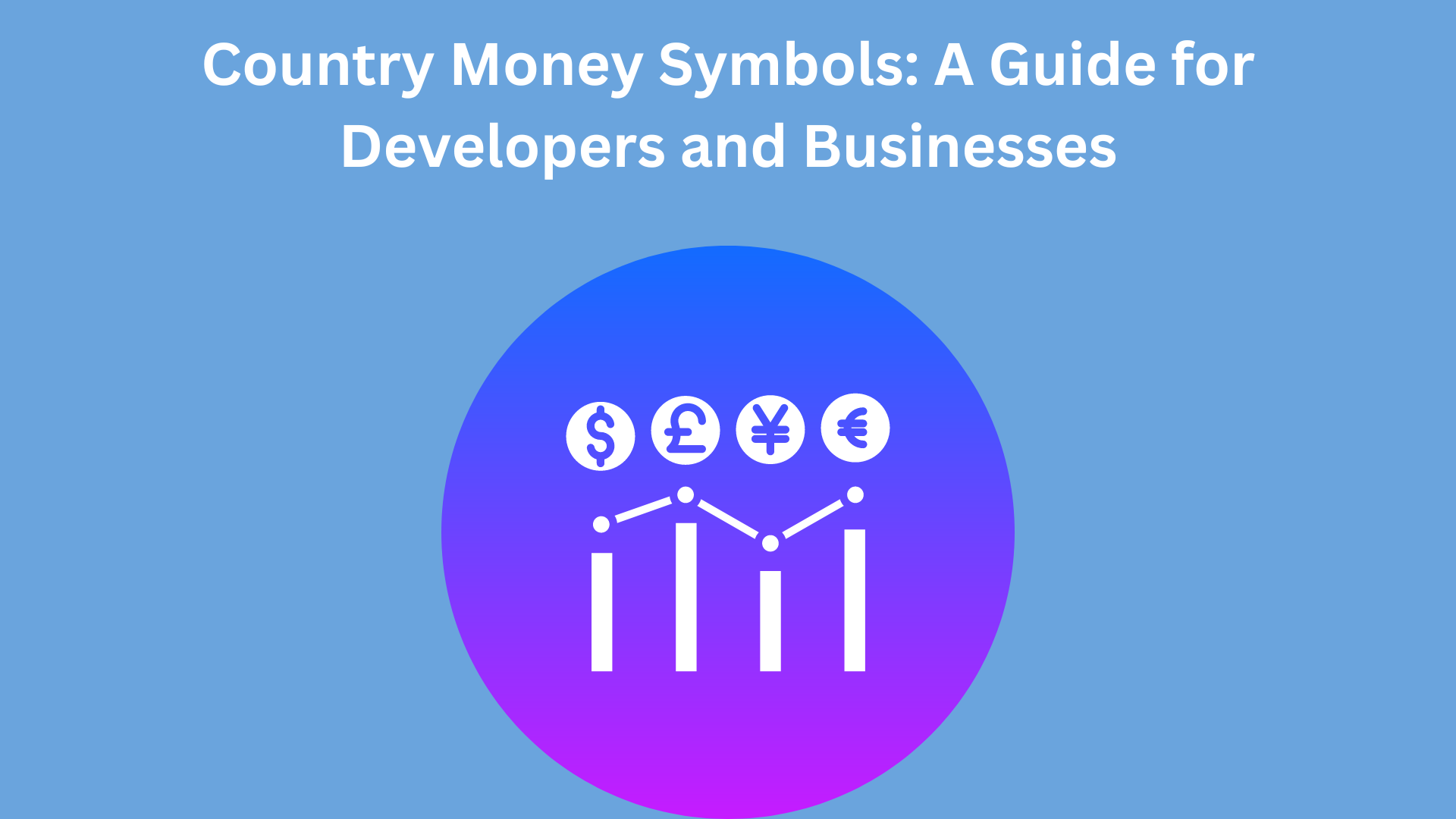Country Money Symbols: A Guide for Developers and Businesses
Money symbols are a crucial part of our daily lives, representing different currencies and countries. They play a significant role in international trade, finance, and economics. In this blog post, we'll explore the diverse world of country money symbols, their meanings, and their importance in the global economy.

Understanding Money Symbols
Money symbols are graphical representations of currencies used in different countries. These symbols are often derived from the currency's name, historical context, or cultural significance. For example, the symbol for the US dollar ($) is derived from the Spanish peso, while the euro (€) symbol is a stylized "E" representing Europe.
Importance of Money Symbols
Money symbols are essential for identifying currencies in financial transactions, trade agreements, and international business. They provide a quick and easy way to represent currencies, helping to avoid confusion and errors in financial transactions.
Common Money Symbols
- USD ($) United States Dollar: The US dollar is the world's primary reserve currency and is represented by the symbol $.
- EUR (€) Euro: The euro is the official currency of the Eurozone, representing 19 of the 27 European Union countries.
- GBP (£) British Pound Sterling: The pound sterling is the oldest currency still in use today, with its symbol derived from the Latin word for pound, "libra."
- JPY (¥) Japanese Yen: The yen is the official currency of Japan, with its symbol derived from the Chinese character for "round."
- CNY/¥ Chinese Yuan Renminbi: The yuan is the official currency of China, with its symbol derived from the Chinese character for "round" and "origin."
- INR (₹) Indian Rupee: The rupee is the official currency of India, with its symbol derived from the Devanagari letter "र" (ra).
Money Symbols and Their Meanings
Money symbols often have cultural or historical significance. For example, the euro symbol represents unity and integration in Europe, while the Japanese yen symbolizes stability and prosperity.

Conclusion
Country money symbols are more than just graphical representations of currencies; they are symbols of economic strength, cultural identity, and historical significance. Understanding these symbols is essential for developers and businesses involved in international trade and finance.
FAQs about Country Money Symbols
Q: What is the oldest currency symbol still in use today?
A: The British Pound Sterling (£) is the oldest currency symbol still in use today, dating back to the Roman Empire.
Q: Are all currency symbols derived from the currency's name?
A: No, not all currency symbols are derived from the currency's name. Some symbols are derived from historical or cultural significance.
Q: How do currency symbols impact international business?
A: Currency symbols play a crucial role in international business by facilitating easy identification of currencies in financial transactions and trade agreements.
Q: Are there any currencies that do not have a symbol?
A: Yes, some currencies do not have a widely recognized symbol, and their names are often abbreviated instead.
Q: Can currency symbols change over time?
A: Yes, currency symbols can change over time due to political, economic, or cultural reasons.